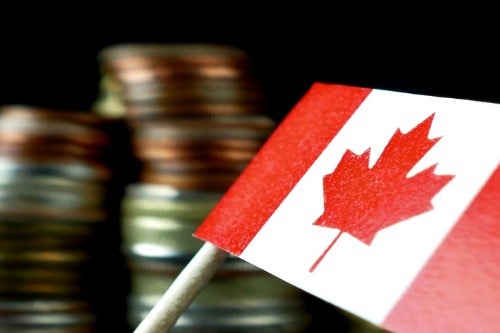
Canada’s banking watchdog has reduced the amount of capital banks have to set aside for a buffer, freeing up C$300bn for banks to lend to consumer and business clients.
As part of a fiscal package, the country has also revived a financial-crisis programme to acquire up to C$50bn of insured mortgages from chartered banks on favourable terms to lenders.
The Bank of Canada has cut interest rates twice this month, each time by a half percentage point, and introduced a series of financial backstops to ensure there is enough liquidity in the system.
Among those steps was a commitment to purchase Canadian mortgage bonds and one-month bankers’ acceptance notes.
Bank of Canada Governor Stephen Poloz has said he won’t rule out another emergency rate cut or any other measures aimed at sheltering the economy from the impact of the coronavirus pandemic.
“There’s nothing scripted about the bank’s posture,” Mr. Poloz said.
How well do you really know your competitors?
Access the most comprehensive Company Profiles on the market, powered by GlobalData. Save hours of research. Gain competitive edge.

Thank you!
Your download email will arrive shortly
Not ready to buy yet? Download a free sample
We are confident about the unique quality of our Company Profiles. However, we want you to make the most beneficial decision for your business, so we offer a free sample that you can download by submitting the below form
By GlobalDataMeanwhile, Canada’s six major banks late Tuesday said they were willing to accommodate clients squeezed by repercussions from the coronavirus pandemic, including allowing homeowners to defer mortgage payments for up to six months.
Canada doubles fiscal package
Earlier this month, Canada rolled out a fiscal boost and tax deferrals package for coronavirus relief.
About one million Canadians applied for jobless benefits last week, forcing the government to nearly double its original fiscal-stimulus package. The government has also scramble to put together additional another financial buffers for firms to ensure their survival during the coronavirus pandemic.
Hardest hit sectors include tourism, airline and energy, which have been laying off workers, suspending operations, and scaling back investment plans.
Altogether, Canada nearly doubled its initial fiscal package. “In these extraordinary times, we are taking extraordinary measures,” said Canadian Prime Minister Justin Trudeau.
The upgraded package, targeting income-strapped households, is now budgeted at C$52bn (US$35.88bn) versus the original C$27bn.
Along with the income support, the government will defer tax payments of C$55 billion, for a total short-term financial injection of C$102 billion, or nearly 5% of Canada’s gross domestic product.
“Right now, my only job is to make sure that Canadians can keep food in the fridge, keep a roof over their heads and afford the medicines they need,” said Bill Morneau, Canada’s Finance Minister.
A bigger package than during the Great Financial Crisis
The measures now being rolled out go beyond those provided during the 2008-09 financial crisis and global recession. During that crisis, the former Conservative government in Ottawa implemented a roughly C$60bn stimulus program to counter the damage.
On a real and nominal basis, the rescue package from the Mr. Trudeau’s Liberal government is larger, but some economists contend more is required.
Compared with its allies, Canada escaped the credit crisis relatively unscathed, as it wasn’t forced to bail out its banks, and its housing and commodities sectors rebounded quickly.
Joseph Brusuelas, chief economist at tax and financial advisory firm RSM US LLP, said Canada’s financial system is exhibiting “disturbing conditions,” with stress reaching levels similar to the 2008 financial crisis.
“The current shock to the financial system could be catastrophic,” he said.







